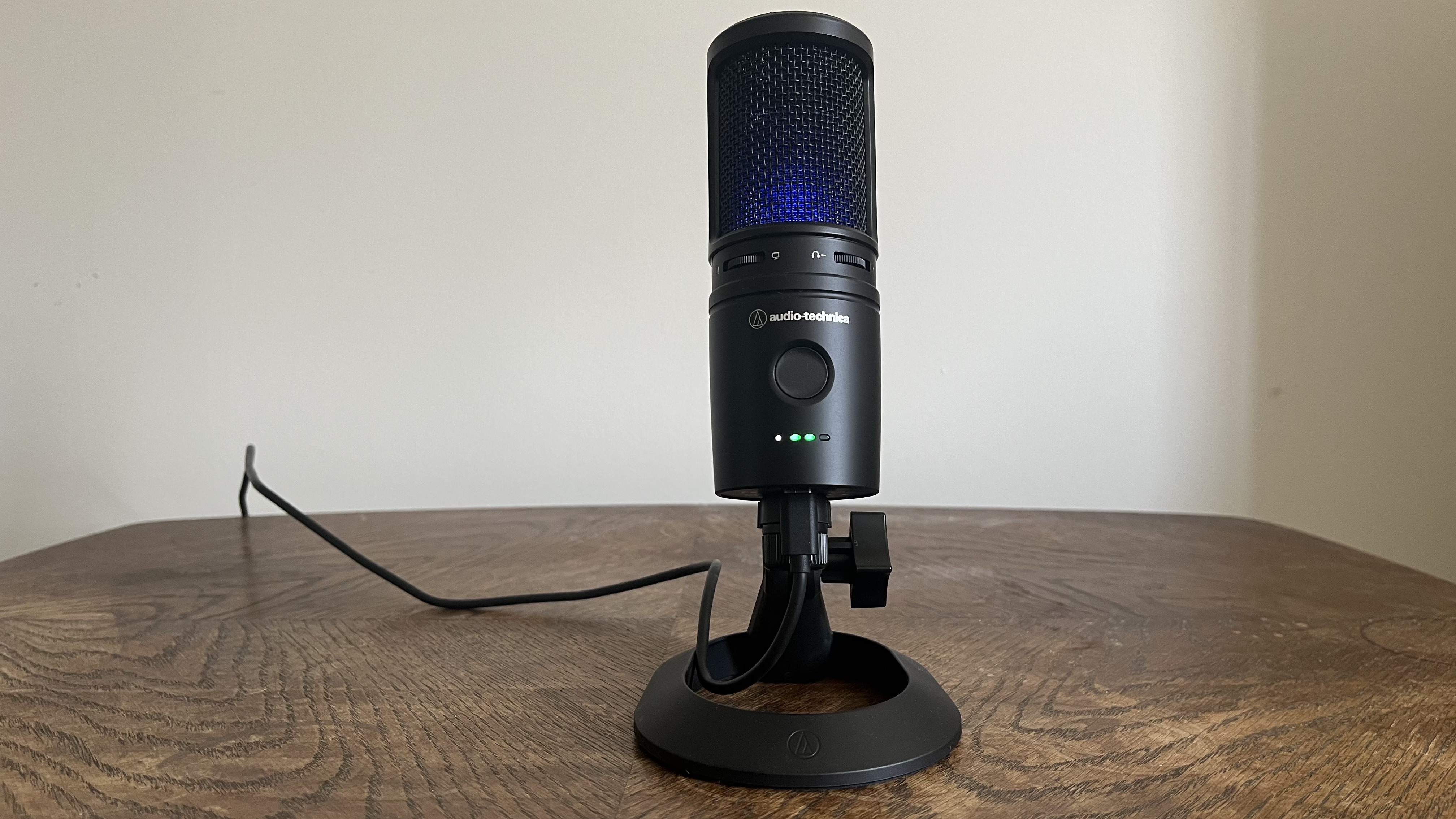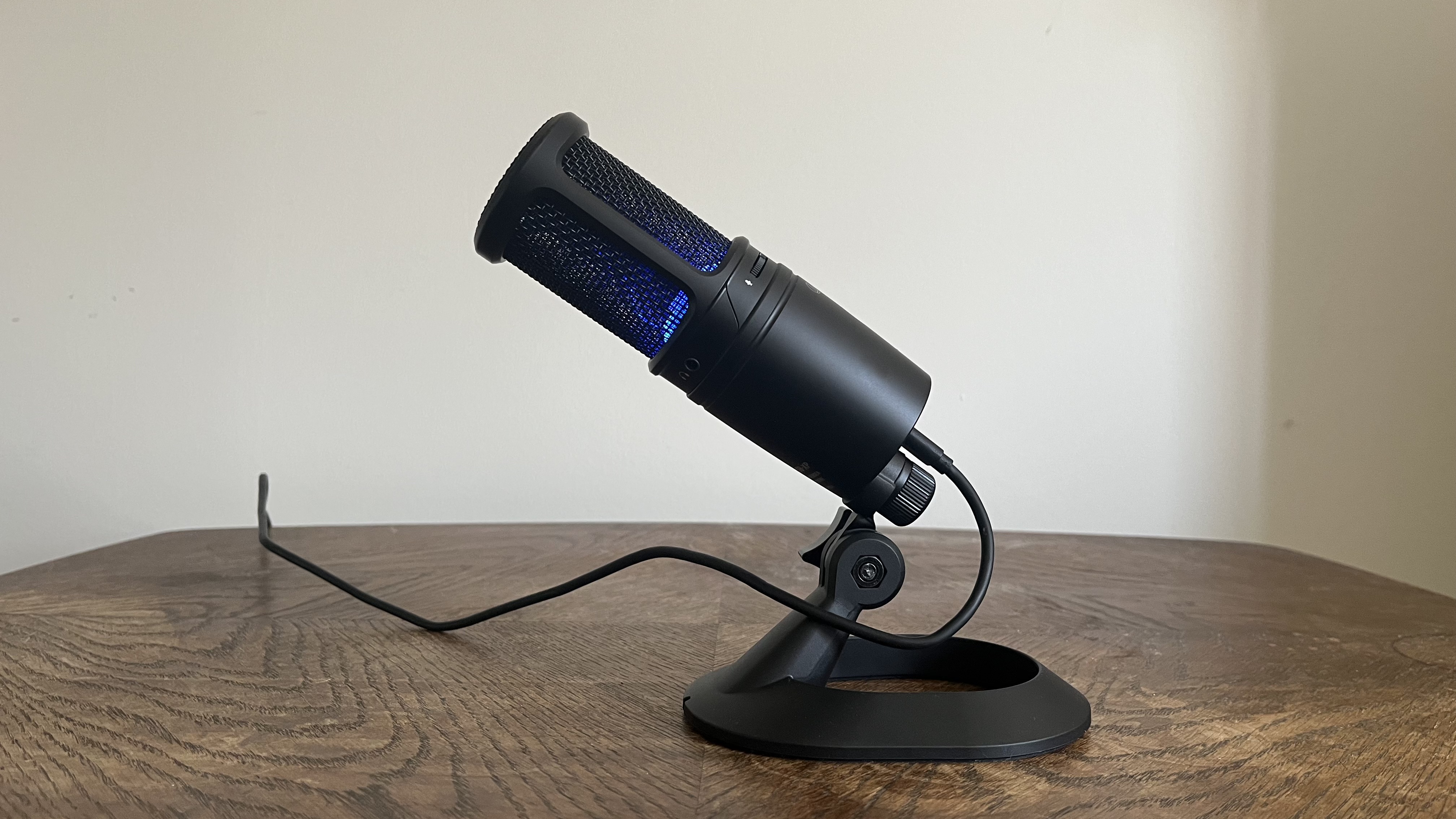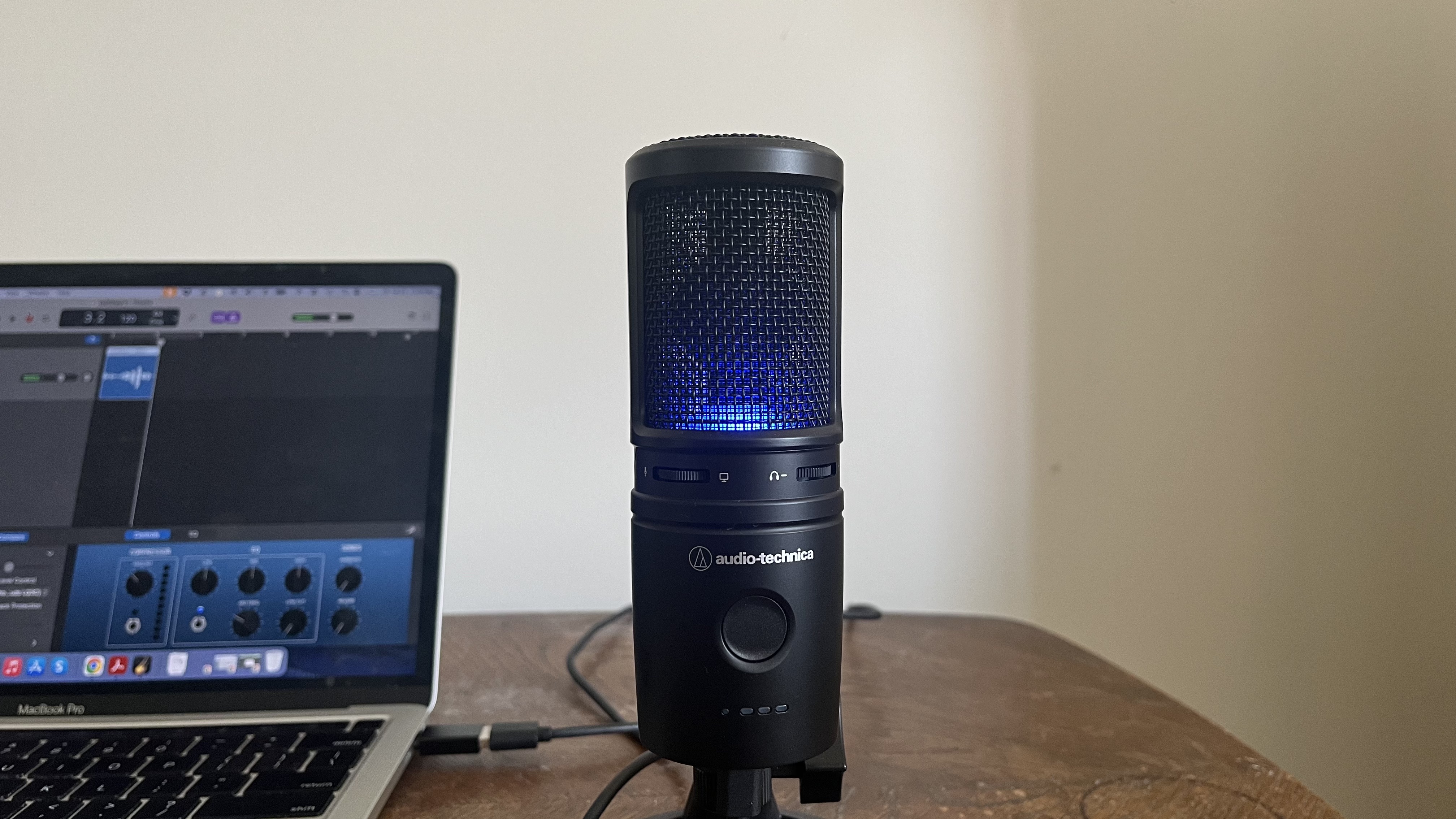
Audio Technica AT2020USB-XP: Two-minute review
While the Audio Technica AT2020USB-XP is not quite as feature-rich as many of the best USB mics available right now, it is still a strikingly good sounding mic that most users will be happy to use as their main mic. Yes, it’s missing things like multiple polar patterns, but there are enough features on hand that only those planning on recording multiple sources like hosting a guest on a podcast will find this mic limiting.
In fact, this is a souped up version of the Audio-Technica AT2020USB-X, which enjoy a four out of five star rating from us. Of course, the extra features on the “XP” version come at an extra cost. And, it’s even more expensive compared to the XLR-equipped AT2020 that every struggling musician and their little brother owns.
But, if you want the most possible features while sticking with Audio-Technica, a brand that’s been renowned for its microphones for a long time, then the Audio Technica AT2020USB-XP is the model to get.
Considering that the OG AT2020 was meant as an affordable way to get good sound, it’s no surprise that the Audio Technica AT2020USB-XP looks like a lot of other microphones. This side-address, single capsule model uses the typical cylindrical form factor and comes in matte black.

At least its onboard controls are somewhat unique. There are three controls on the front of the body, a mix control to go between direct monitoring and the PC sound, a headphone level, and a large capacitive mute button. The two dials can be a pain to get to when using the included pop filter.
Two additional buttons are situated on the bottom – one for automatic gain control and one for noise reduction. They both have LEDs that light up when on. Since the noise reduction has three levels not including off, it has three corresponding LEDs to let you know how much noise reduction is being applied.


When plugged in, there’s actually a little more going on. LED lights within the grille light up blue when in use (red when muted). And, while it doesn’t change much in terms of shade or brightness to indicate any level changes, it does flash when there’s an issue. For instance, while it can record it in 24-bit / 192 kHz, it can’t play back at that bit and sample rate, so when I tried to set up recording software for that higher resolution, the mic would flash to indicate that the sample and bit rate needed to be lower.
There’s not much in the way of ports – it has just a headphone port on the back of the unit and USB-C underneath. At least they’re both easily accessible. More importantly, even though the cable provided is USB-C to USB-A, Audio-Technica thoughtfully included a USB-C adapter for users like me whose main computer only has USB-C ports. I’ve reviewed and tested quite a few USB mics, and this is the first time I’ve seen that included.
Beyond the USB-C adapter, I also appreciated the inclusion of a pop filter that snaps onto the body as well as an mounting thread adapter to use with different mic stands.


Lastly, I would be remiss if I didn’t say anything about the stand it comes with. It has plenty of heft so it won’t be easy to knock it around during use and has a good amount of tilt of a little over 90 degrees. You won’t find any swivel, but it’s small enough that you can just pick it up and move it.

Sound-wise, the Audio Technica AT2020USB-XP does exactly what it should – it delivers clear and full audio, whether it was my voice or an instrument. It even clearly picked up the sound of the birds chirping outside. Since it only has the Cardioid polar pattern, there are some limits to its use. You won’t be able to use it to pick a stereo or omnidirectional signal so doing podcasts with other guests or recording a room full of people will require a different setup.
However, if you just need something for your voice while streaming, podcasting, or even recording music, this mic will be perfect. Plus, its two features that set it apart from the Audio Technica AT2020USB-X are worth it if you either have a noisy environment or expect to deal with spikes in volume.

The noise reduction is the more useful of the two features in my opinion. Some ambient noise is hard to control such as the fans in a PC so being able to turn that feature on to reject that sound is valuable, especially since there are three levels of noise reduction, all of which do a good job of still retaining the timbre of the speaker’s voice.
The automatic gain control is going to be of less interest for some. However, there are plenty of us that can get quite loud when we get excited (when we’re usually not), and this feature does a good job of adjusting the mic volume on the fly to minimize any sort of distortion.
Whether you want to pay full price for the Audio Technica AT2020USB-XP depends on whether these last two features are worth it. The “P”-less version that I’ve referred to a few times here will sound and function the same – you just won’t have these two features or the pop filter.
Audio Technica AT2020USB-XP: Price & availability
- How much does it cost? $169.00 / £149.00 / AU$349.00
- When is it available? Available now
- Where can you get it? Available in the US, UK, and Australia
For a USB mic, the Audio Technica AT2020USB-XP is not cheap. At $169.00 / £149.00 / AU$349.00, it will set you back more than many of the top USB mics. It comes with only one polar pattern and no mic gain control, which is not only limiting, but are features found on some of the competition.
For instance, the Blue Yeti microphone, which remains one of the most popular options out there, goes for $129.99 (around £100 / AU$180) and comes with both a gain dial and three polar patterns. At least the Audio Technica AT2020USB-XP can record at a higher bit and sample rate – 24-bit/192 kHz vs the Yeti’s 16-bit/48kHz.
Or, consider the AKG Lyra, a fantastic entry from another established mic company. It’s a little closer in price at $149.00 / £149.99 / AU$ 269.00 and has four polar patterns, not to mention the same high bit and sample rate. The few advantages that the Audio Technica AT2020USB-XP has over the AKG Lyra is its built-in noise reduction to reject ambient noise and a USB-C adapter.
- Price: 3.5 / 5
Audio Technica AT2020USB-XP: Specs
Should you buy the Audio Technica AT2020USB-XP?

Buy it if...
Don't buy it if...
Audio Technica AT2020USB-XP: Also consider
How I tested the Audio Technica AT2020USB-XP
- Used regularly for a week
- Used with a few different sources
- Tested all the features
I tested the Audio Technica AT2020USB-XP over a week, speaking into it from different angles and distances to get a good idea of how it sounds. I even used a guitar to see how it would respond to a louder source. I also spent time with the various features to see how well they were implemented.
After spending time with this mic, it’s clear that it’s a solid option for someone who needs to record or reproduce one source well, whether it’s a voice or instrument.
I’ve reviewed a lot of audio equipment over the years including USB mics, not to mention even more time as a musician and at-home “producer,” so I’ve used my expertise towards giving an honest and fair opinion to any audio product I test.
First reviewed August 2023







